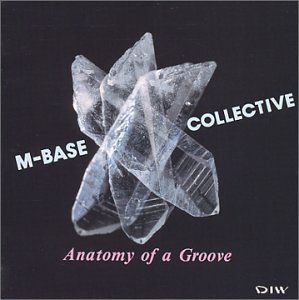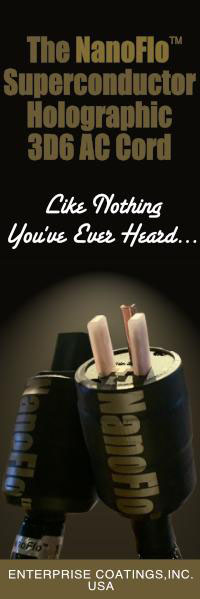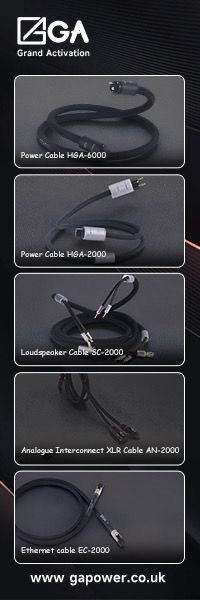The Akasha stereo amplifier from Wells Audio
|
...leaves me wondering what its upscale sibling, the Innamorata sounds like. |
|
|
|
April, 2013 |

 Jeff Wells, the namesake of Wells Audio tells an interesting, and surely unusual story about the creation of his amplifiers. Wells is not a techie; he’s a hi-fi dealer, the owner of Audible Arts in Campbell, California. As he describes it, the Bay Area and Silicon Valley are packed with engineers, at least some of whom fancy themselves to be amplifier designers.
Jeff Wells, the namesake of Wells Audio tells an interesting, and surely unusual story about the creation of his amplifiers. Wells is not a techie; he’s a hi-fi dealer, the owner of Audible Arts in Campbell, California. As he describes it, the Bay Area and Silicon Valley are packed with engineers, at least some of whom fancy themselves to be amplifier designers.
One of these homemade contraptions made its way into his store with some admirable sonic goodies. A tube guy, Wells felt the tonal colors, harmonic richness, and timbres of this solid-state design rivaled some tubed equipment. He also recognized this garage-made special’s imperfections: muddy bass with no decay or ambiance, but he liked it enough that he thought it worth tinkering with. The mission: fix the flaws while preserving the desirable tube-like qualities. With no idea if it would work and a lot of trial and error – essentially improving the design with a soldering iron – Jeff and his technician refined the prototype into what would become two finalized amplifiers, the top of the line Innamorata, and the subject of this review, the Akasha.
We’ll call this one a happy accident.
Having been a tube guy for a few years, with all the fussing, tweaking, and tube hunting this generally entails, I’ve learned to appreciate a piece of hi-fi equipment that is functionally idiot proof. Take, for example, a power amp with two RCA jacks, two pairs of speaker terminals, and a power switch: it doesn’t get any simpler than that. Make it sound good, skip the acres of aircraft-grade milled aluminum, and sell it at a decent price, and you’ve got a piece of kit that’s worth checking out.
.gif) The Wells Audio Akasha power amplifier is basic black, with a piano polished front panel. The white scripted lettering and brass-ringed voltmeter add a nice touch of visual sophistication. The voltmeter, which reminds me of the meters on the new D’Agostino Momentums, has a watch-faced, almost Victorian look to it. Turn on the amplifier and the meter pegs itself to your incoming line voltage and stays there. (My wife was disappointed to learn that this meter does not bounce with the music, but was unmoved by my standing offer to buy an amplifier with bouncing meters anytime she’s ready to go shopping.)
The Wells Audio Akasha power amplifier is basic black, with a piano polished front panel. The white scripted lettering and brass-ringed voltmeter add a nice touch of visual sophistication. The voltmeter, which reminds me of the meters on the new D’Agostino Momentums, has a watch-faced, almost Victorian look to it. Turn on the amplifier and the meter pegs itself to your incoming line voltage and stays there. (My wife was disappointed to learn that this meter does not bounce with the music, but was unmoved by my standing offer to buy an amplifier with bouncing meters anytime she’s ready to go shopping.)
Although physically large at 20”x 18.5” x 6.5” the Akasha isn’t especially heavy. At about 50 lbs. it’s a feather compared to the massive iron transformers in my Cary V12r. On the other hand, with its side panels comprised entirely of heat sinks, it’s just as awkward to move around. But hey, it’s not like you’re taking your power amplifier for a stroll in the park or expecting it to do somersaults. Wrestle it into place and leave it there.
Connections are straightforward. Run some interconnects from your pre-amp, hook up some speaker cables, plug it in and flip the switch. Now you’re playing music. The Akasha momentarily dims the lights in my family room every time I turn it on, suggesting a significant power draw (although I readily concede that the wiring in my house sucks for hi-fi, but that’s another story). It does seem to be a robust piece of equipment: once it’s fired up it just sits there, cool and collected. A few of the heat sinks towards the rear panel get a little warm, but barely, and the top stays cool to the touch. Moe the cat, who’s had a lifelong obsession with sleeping on the warm cabinet over my tube amp, didn’t even give this one a sniff.
Back to simplicity: one of the reasons I found this amplifier compelling on paper (and requested it for a review) was its straightforward features and aesthetics. With so many high-end amplifiers now recommending, or even requiring balanced connections to get the most out of them, a high-quality design running exclusively on RCA jacks seemed refreshingly simple. Aside from the meter, which really is sharp looking, this piece is pure function. It’s nicely finished and well constructed, but no one would describe the Akasha as ‘bling.’ There isn’t a bit of intricately machined billet aluminum anywhere in sight. That stuff is nice, but when push comes to shove, I want to know that my money is on the inside of an amplifier any day of the week.
The other thing that attracted me is perceived value. At $4,000 the Akasha isn’t cheap, but by today’s hi-fi standards it’s hardly outrageous either. At that price point it won’t leave striving audiophiles financially excluded with their noses pressed up against the glass. It’s reasonably attainable. This wasn’t an accident, either. Having first finalized the design of the more expensive Innamorata ($6000), Wells decided to see if he could hit a more affordable price point by swapping out some of the really expensive parts – the Bybee AC filtering and “music rails” – and still have an amp worth listening to. And thus, the Akasha was born. I think that’s a really admirable move on Wells’ part. These amps are really good and he’s not going to have any trouble selling them. Making a more accessible, less expensive version might attract some new audiophiles, and that’s good for his business and the hobby.
Of course, for any piece of equipment to be a good value it also has to perform, preferably above its price point, and the Akasha acquits itself well. At 120 watts into an 8 Ohm load (200 into 4ohms) the Akasha is not monstrously powerful, but it’s got plenty of juice for most real-world speaker loads. It drives my 8 Ohm Spendor S8e’s handily, and with notably solid bass. As the saying goes, if the first watt sucks why would you want 499 more of them? The Akasha provides 120 really good watts, and that’s more valuable than the raw power to light a city block.
Those watts provide extended highs, a smooth natural midrange, and, as mentioned, really well controlled deep bass. The stereo image has good detail, with stage height and three-dimensional depth. The amp is also very quiet. The Akasha clearly reflected differences between components elsewhere in the signal chain. I swapped cables a few times, but mostly stuck with the Zentara IC-4 interconnects and TF-8 speaker cables. Their openness and illumination made a really good combination with the clarity of the Akasha, staying out of the way and letting the amplifier show itself off. If I had to sum up its best qualities I’d say it’s natural presentation, with full colors, weight, and realistic instrumental timbres, as well as a good measure of dynamic punch. The overall sound is a little warmer than neutral, erring on the side of a pleasant listening experience over purely clinical correctness.
 Listening to an oldie-but-goodie, the M-Base Collective’s important and somewhat neglected Anatomy of a Groove[DIW 1992] builds a rich sonic texture around some very forward thinking music. Although the Brooklyn-based Collective leaders Steve Coleman and Greg Osby might have rejected the term at the time, Anatomy is clearly rooted in the jazz tradition of acoustic instruments and improvisational structure, but with electric elements of funk and soul heavily represented. Bass guitar has excellent tonality, and the drumming creates a deep, pulsing footer for the entire record. Without the ability to properly produce these lower register elements no amp is going to make this record sound good. Flab at the bottom would simply make the rest of the mix sound sloppy. The Akasha keeps the bass guitar lines tight and defined, and perhaps most importantly, like a distinct instrument instead of a series of blob-like lower register tones. The bass drum has the necessary slam to create realistic reverberations. The Akasha’s grip on the bass is one of its most pronounced qualities, and as the music moves further up the octaves, the tight bass allows everything else to emerge clearly. “One Bright Morning” combines the bass definition, Cassandra Wilson’s rich alto, and the acoustic instruments into a deep natural soundstage that retains excellent overall detail and space. This recording has a lot of disparate sonic elements that can challenge an amp’s ability to hold them all together. The Akasha makes it look easy.
Listening to an oldie-but-goodie, the M-Base Collective’s important and somewhat neglected Anatomy of a Groove[DIW 1992] builds a rich sonic texture around some very forward thinking music. Although the Brooklyn-based Collective leaders Steve Coleman and Greg Osby might have rejected the term at the time, Anatomy is clearly rooted in the jazz tradition of acoustic instruments and improvisational structure, but with electric elements of funk and soul heavily represented. Bass guitar has excellent tonality, and the drumming creates a deep, pulsing footer for the entire record. Without the ability to properly produce these lower register elements no amp is going to make this record sound good. Flab at the bottom would simply make the rest of the mix sound sloppy. The Akasha keeps the bass guitar lines tight and defined, and perhaps most importantly, like a distinct instrument instead of a series of blob-like lower register tones. The bass drum has the necessary slam to create realistic reverberations. The Akasha’s grip on the bass is one of its most pronounced qualities, and as the music moves further up the octaves, the tight bass allows everything else to emerge clearly. “One Bright Morning” combines the bass definition, Cassandra Wilson’s rich alto, and the acoustic instruments into a deep natural soundstage that retains excellent overall detail and space. This recording has a lot of disparate sonic elements that can challenge an amp’s ability to hold them all together. The Akasha makes it look easy.
With eighty-eight keys (usually) covering seven octaves, the piano has as much dynamic range as you’re likely to find in a single instrument, save perhaps the pipe organ. 
It’s capable of tremendous volume, power, and bombast on one hand, and deep subtlety, emotion, and refinement on the other. Stanley Cowell’s It’s time[Steeplechase 2012] gives the Akasha a good workout. A standard trio recording, Cowell has confident hand, but a middleweight touch. There’s a lot going on in his playing, but he makes dramatic music without pounding the daylights out of the keys. The piano sounds bright and colorful, with ringing sustain when he holds notes, and immediate decay when he lets them go. On two-handed cords I could distinguish each note contained therein without muddiness or smearing. The album shows off the Akasha’s competence in reproducing both dynamics and subtle variations in tone and timbre. I’d be remiss if I didn’t also mention that this is a really great new jazz album. Cowell is not exactly a household name, but with forty plus years as both a performer and educator he’s got his chops. The music is self-assured, well constructed, interesting, and accessible. It’s really first-rate.
 After speaking with Jeff Wells’ on the telephone, it was clear that he’s particularly proud of what he sees as the Akasha’s tube-like presentation, so I put that to the test. Plugging my EL34-based Cary V12r back in after an extended period with the Akasha revealed a few differences. First, the tube set immediately revealed more stage depth. Playing the title track to Alain Toussaint’s Bright Mississippi [Nonesuch 2009] moved the snare drum noticeably back into the soundstage. The Cary had a little more three-dimensionality, but at the expense of a slightly darker overall presentation. There was also a little more overall liquidity with the tubes, while the Akasha had a firmer, more solid-state delivery top to bottom. But indeed, there were parts of the Akasha’s presentation that were more similar than dissimilar to the V12r. I’ve had a few dry sounding solid-state amps, and this isn’t one of them. The Akasha’s reproduction of timbre and tonality were quite similar to what I’m used to hearing through my all-tube rig. Naturally, the place where the Akasha won hands down was in bass definition and dynamic slam. While the Cary (with upgraded caps and some very high-quality old stock bottles) does have deep powerful bass with more low-octave refinement than one might expect, the Akasha just presents a tighter, more crisply delineated bottom end.
After speaking with Jeff Wells’ on the telephone, it was clear that he’s particularly proud of what he sees as the Akasha’s tube-like presentation, so I put that to the test. Plugging my EL34-based Cary V12r back in after an extended period with the Akasha revealed a few differences. First, the tube set immediately revealed more stage depth. Playing the title track to Alain Toussaint’s Bright Mississippi [Nonesuch 2009] moved the snare drum noticeably back into the soundstage. The Cary had a little more three-dimensionality, but at the expense of a slightly darker overall presentation. There was also a little more overall liquidity with the tubes, while the Akasha had a firmer, more solid-state delivery top to bottom. But indeed, there were parts of the Akasha’s presentation that were more similar than dissimilar to the V12r. I’ve had a few dry sounding solid-state amps, and this isn’t one of them. The Akasha’s reproduction of timbre and tonality were quite similar to what I’m used to hearing through my all-tube rig. Naturally, the place where the Akasha won hands down was in bass definition and dynamic slam. While the Cary (with upgraded caps and some very high-quality old stock bottles) does have deep powerful bass with more low-octave refinement than one might expect, the Akasha just presents a tighter, more crisply delineated bottom end.
The other thing that jumped out at me when I put the Cary back on line was what I’ll politely call “tube eccentricities”. After sitting for a few weeks while I reviewed the Akasha, a tube somewhere had developed some intermittent static noises, and my cabinet fan came on when things started to get hot. A big, point-to-point wired tube amplifier can sometimes seem like wrangling a recalcitrant, ill-tempered robot with a mind of its own. They require some accommodation. Upon reawakening, the V12r displayed all of the usual peccadillo’s one associates with tubes, and they all came roaring back as if returning from vacation. I love the way my V12r sounds, but I’d become a little spoiled by solid-state simplicity. Bottom line: Wells’ quest to make a tube-like solid-state amp does capture some of the qualities people associate and like about tubes, and in a very agreeable, easy to live with package. If you like the sound of tubes but don’t want the hassle, the Akasha would be worth checking out.
A few other goodies worth mentioning: Wells’ amplifiers are assembled in California from domestic and foreign components, and while I’m not a ‘Made in USA’ fanatic, it is nice to know that in a recovering economy your hard-earned dollars are supporting an American small business. Scott Frankland, builder of the rare, expensive, and almost legendary Wavestream Kinetics V8 amplifier, assembles the Wells products to specification, so the Akasha comes from good hands. Also, if cash is short, buying the Akasha doesn’t preclude you from getting the benefits of the Innamorata at a later date. The Akasha is fully upgradable to its more expensive sibling for the difference in price. Best of all, you can get Wells on the phone if you need to, which is always a nice customer service touch.
So there you have it. The Wells Audio Akasha is a really good amplifier, combining a measure of the qualities people seek in tubes, with better bass, and without the pain-in-the-ass factor. For further evidence, look no further than the recent AXPONA show where Wells amplifiers were happily being used to drive the $78,000 TAD Reference 1 loudspeaker, reportedly with great results. It’s nicely made, powerful, and it sounds really good. At a time when no one blinks at $25,000 components this amplifier represents a real bargain, too. This thing definitely fights above its weight class, and the fact that it was created almost by accident just makes for a good story. Really, what’s not to like? My only real hang up with the Akasha is this: as good as it is, it leaves me wondering what it’s upscale sibling, the Innamorata sounds like. I might have to get Wells on the phone again.

![]()
greg simmons
Specifications:
– 120 wpc at 8 ohms, 200 wpc at 4 ohms
– Frequency response +/-0.25db from 7 Hz to 35kHz
– Signal-to-Noise Ratio: -103 db, reference level full power output
– Total Harmonic Distortion (THD): – – Gain 30 db
– Input Impedance: 30k Ohms
– Damping factor: 200, reference 8 Ohms nominal
– Power Consumption: 350 Watts idle, 1000 Watts maximum
– Inputs: 1 pair RCA unbalanced
– Outputs: 1 pair WBT 5-way binding posts per channel
– Operating Voltage: 120V, 220V, 230V, 240V at 50 or 60 Hz
– Dimensions: 20 in. W X 6.5 in. H X 18.5 in. D
Price: $4,000.00
Address:
Wells Audio
412 E. Campbell Ave.
Campbell, Ca. 95008
Phone: 408-376-0861
Fax: 408-376-0862
Email: jeff@wellsaudio.com
Website: www.wellsaudio.com
|
Associated Equipment:
|
|||
| Analogue | |||
| SOTA Star Sapphire turntable Audioquest PT-6 arm Audio Technica OC-9 cartridge |
|||
| Digital Front End | |||
| Cambridge 840C cd player | |||
| Amplification | |||
| Emotive Audio Poeta preamplifier Cary Audio CAD-280 V12R Project Tube Box SE with NOS Mullard 12AX7 tubes |
|||
| Loudspeakers | |||
| Spendor S8e | |||
| Cabling | |||
| Zentara IC-4 Interconnects Zentara TF-8 Speaker Cables Nordost Blue Heaven interconnects LAT International SS1000Mk2 speaker cables Cullen power cords MIT Z-Cable power cords |
|||
| AC Conditioners | |||
|
Stereo Times Masthead
Publisher/Founder
Clement Perry
Editor
Dave Thomas
Senior Editors
Frank Alles, Mike Girardi, Russell Lichter, Terry London, Moreno Mitchell, Paul Szabady, Bill Wells, Mike Wright, and Stephen Yan,
Current Contributors
David Abramson, Tim Barrall, Dave Allison, Ron Cook, Lewis Dardick, John Hoffman, Dan Secula, Don Shaulis, Greg Simmons, Eric Teh, Greg Voth, Richard Willie, Ed Van Winkle, Rob Dockery, Richard Doron, and Daveed Turek
Site Management Clement Perry
Ad Designer: Martin Perry





Be the first to comment on: The Akasha stereo amplifier from Wells Audio